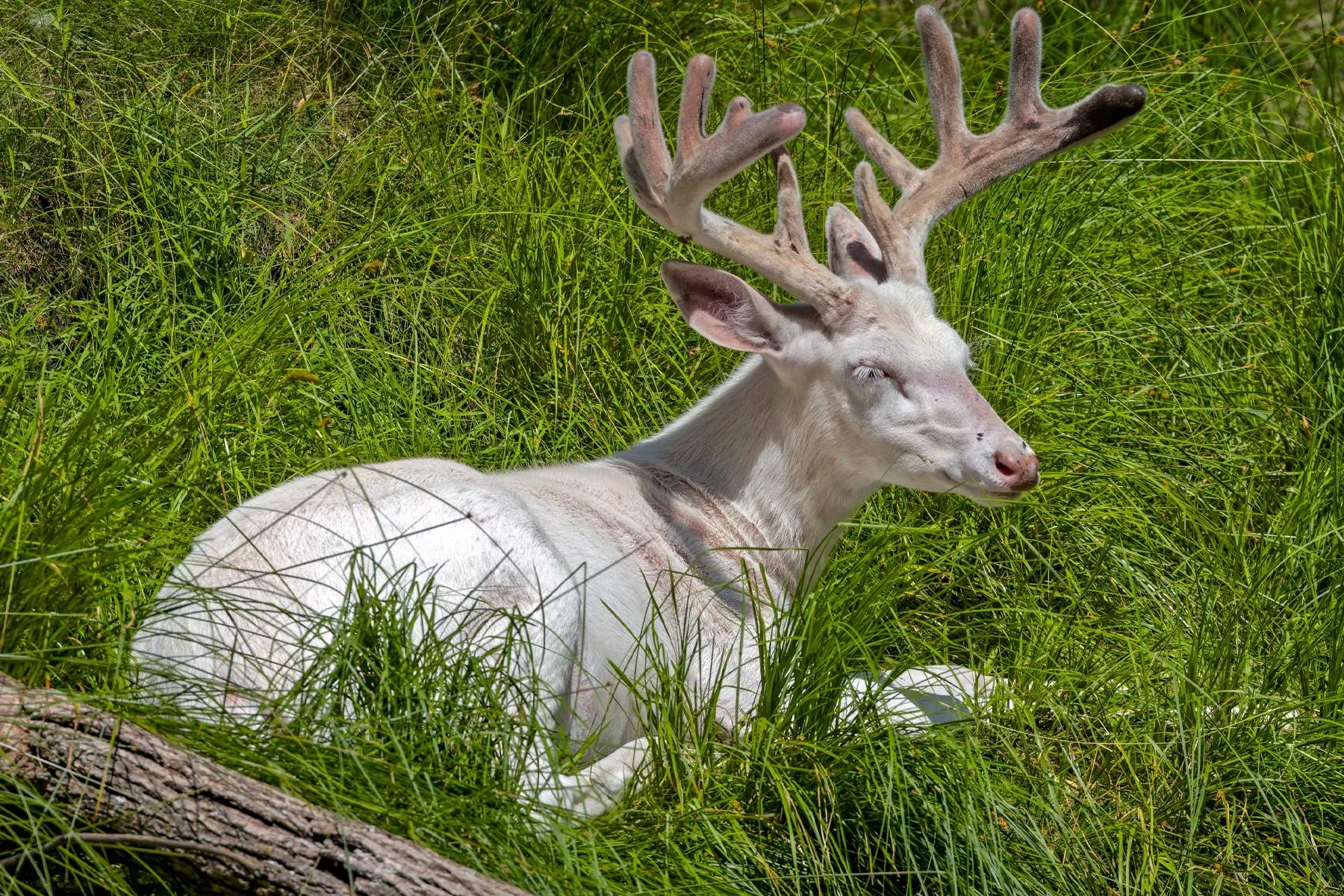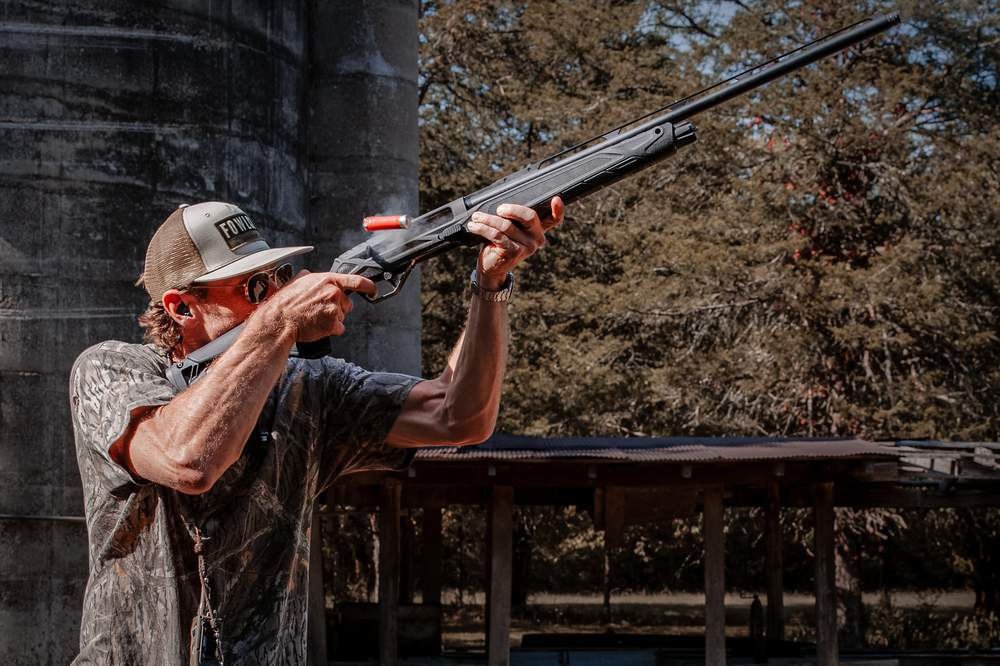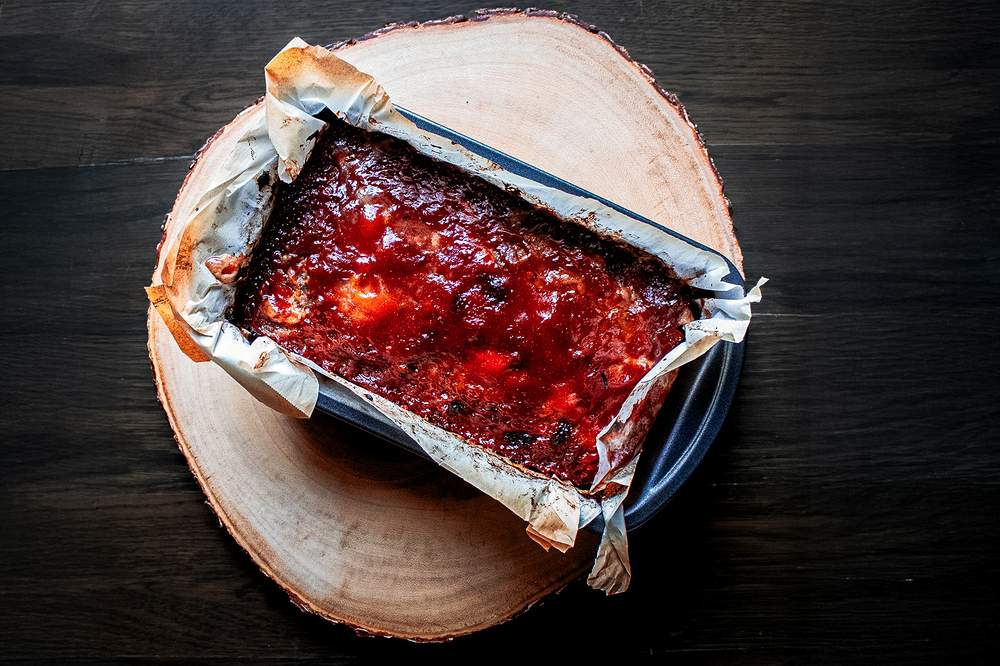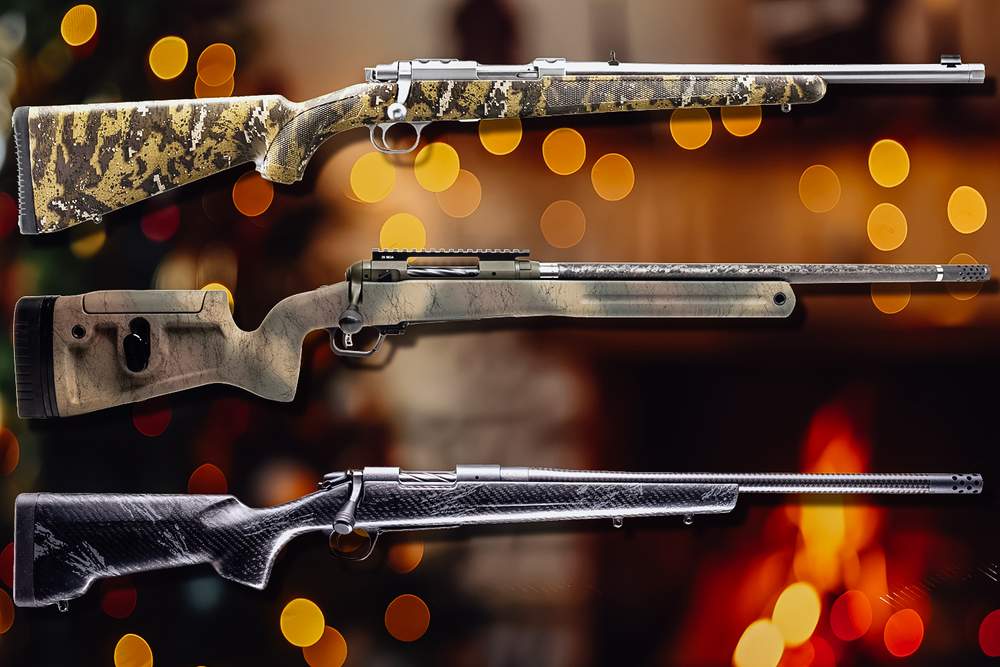The animal kingdom is full of surprises, and some of those come in the form of wild game oddities. Odd occurrences in North American game animals (big and small) include some wild anomalies. While oddities can occur in virtually every species, check out the following examples in white-tailed deer, wild turkeys, and black bears. And don’t miss the real-life example of a hunter-harvested turkey from this season.
Whacky Whitetails
Whitetails are cool critters, and there are a lot of reasons hunters are so passionate about them. But they also have numerous interesting traits about them that are rarely expressed.
For example, consider “color phase” deer, such as albino, leucistic, melanistic, and piebald.
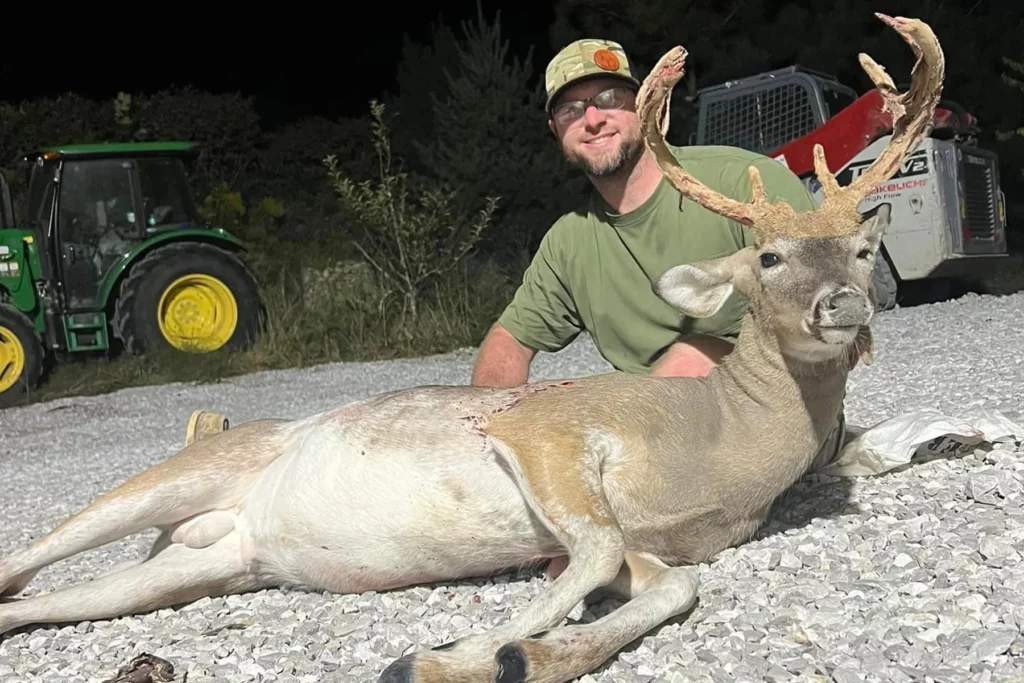
Albino/Leucistic: An albino is an all-white deer. It also features pink body parts, such as a pink nose and eyes. This is quite rare. Similarly, a leucistic is all white, but lacks the pink eyes, nose, etc., to be considered truly albino.
Melanistic: A melanistic deer is an all or mostly black whitetail. This all-dark fur pattern is the rarest of the whitetail color phases.
Piebald: A piebald deer is a mix of white and brown fur patterns. It can lean toward more white or browner, but either end of the spectrum, and everything in between, qualifies. It’s the most common color phase in deer.
Oddities can appear in the antler department, too. The whitetail world can produce numerous oddball occurrences.
Antlered Does: Most does don’t have antlers. When they do, it’s usually a sign of higher testosterone levels. Oftentimes, this leads to does that remain in velvet. It’s even rarer (almost non-existent) for does to shed velvet and have hard antlers.
Antler Injuries: Injuries also result in weird antler shapes and features. Bodily injuries can impact these. Oftentimes, front-leg injuries impact the same-side antler. Generally, rear-leg injuries impact the opposite side antler. Direct damage to the antler pedicle before the growing process begins, or direct damage to a growing antler itself, can result in oddly shaped racks, too.
Cryptorchid Buck: A cryptorchid buck is a situation where a buck’s testicles are damaged. Generally, this results in a deer growing a rack that never sheds velvet. Furthermore, the antlers never cast for regrowth. Instead, the deer just continues growing and usually produces a very distinct antler shape.
Doppelkopf Deer: A Doppelkopf whitetail is a condition where the deer doesn’t shed one or both antlers. Despite that, it grows a new antler right beside it, ultimately resulting in a dual set of antlers.
Disease, genetics, and other factors can lead to abnormalities, too. The following are some of these.
Deer Fibroma (Warts): When warts appear on deer, it’s almost always deer fibroma. These tend to grow around the head, neck, and shoulders, but can appear anywhere on the deer’s body. Usually, unless these get around the eyes, mouth, or nose, it isn’t a fatal situation.
Bullwinkle Deer: Much is still unknown about the Bullwinkle condition. That said, it’s an ailment where the deer’s mouth and nose region is abnormally large. It’s believed to be a condition created by a bacterial infection.
Dwarf Deer: As occurs in other species, deer can have “dwarf” versions of themselves, too. It’s the opposite of “gigantism.”
Mange: Another health condition, mange, can make a deer look quite different. This is where they lose all hair and leave them looking all leathery. Mange is caused by a parasite.
Upper Canine Teeth: Although very rare, a small percentage of deer have upper canine teeth. This is a very rare (recessive) trait that isn’t common in modern whitetails.
Wild Turkeys
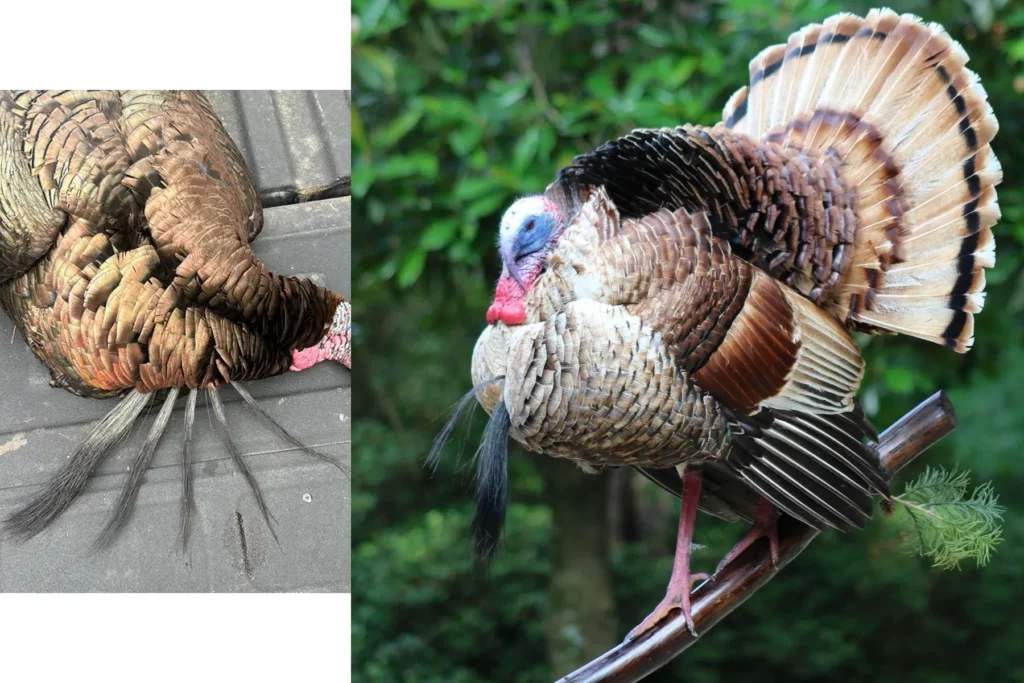
Wild turkeys have many of their own abnormalities. From color phases to beard and spur configurations and more, some of these express unique traits.
Color phases in wild turkeys are unique, and these include white (leucistic), true albino, erythristic, melanistic, and smoke gray.
White (Leucistic): A white or leucistic turkey is all white. That said, it lacks the pink eyes and other pink body colorations to be a true albino. This is on the most common end of the color phase spectrum.
True Albino: A true albino turkey is all white. Additionally, it has pink eyes. This is the signature feature that qualifies it for this designation. This is on the more common end of the color phase spectrum.
Erythristic: An erythristic turkey is also referred to as being red phase. This turkey color phase includes multiple shades of red, ranging from oranges to rusty hues. This is the second rarest color phase.
Melanistic: Melanistic is the term for an all-black turkey. The melanistic turkey is the rarest of the color phases.
Smoke Gray: A smoke gray turkey is a mixture of black, gray, and white colorations. This color phase ranks middle of the pack amongst other oddities regarding color phase rarity.
Beards and spurs can produce abnormalities, too. These tend to include beard discoloration and multiples of beards and spurs.
Beard Discoloration: When a beard turns brown, and sometimes falls off, it’s a form of melanin deficiency. It is not the commonly stated (and mythical) beard rot.
Multiple Beards: Turkeys can have multiple beards. Oftentimes, these are smaller in diameter (and sometimes in length) than the primary beard.
Multiple Spurs: Although very rare, some turkeys express multiple spurs. Generally, these are in a “stacked” formation above or below the primary spur.
Diseases are of concern, too. These aren’t rare, but aren’t super common, either.
Avian Pox: This disease often comes without symptoms, but it can also produce lesions around the head and neck areas.
Lymphoproliferative disease (LPDV): LPDV can cause tumors around the head and neck. It’s becoming more of a problem in the world of wild turkeys.
Black Bears
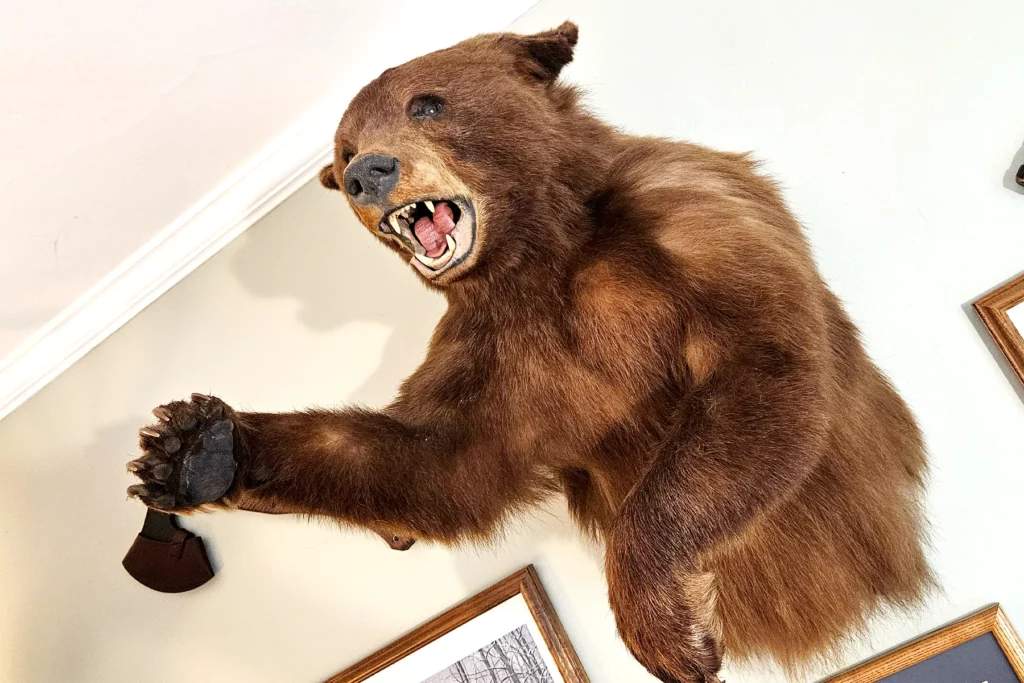
Perhaps the most famous example of odd occurrences and color phases is those found within the black bear species.
Blonde: Blonde bears are lighter in color and tend to be a blonde to light brown coloration.
Cinnamon: Cinnamon bears get their name honestly, too. They tend to be a light to moderate brown coloration.
Brown: Black bears can be brown as well. These are usually a moderate to rich brown.
Other: White markings on their chest or neck.
Case in Point: An Oddity in Wild Turkeys
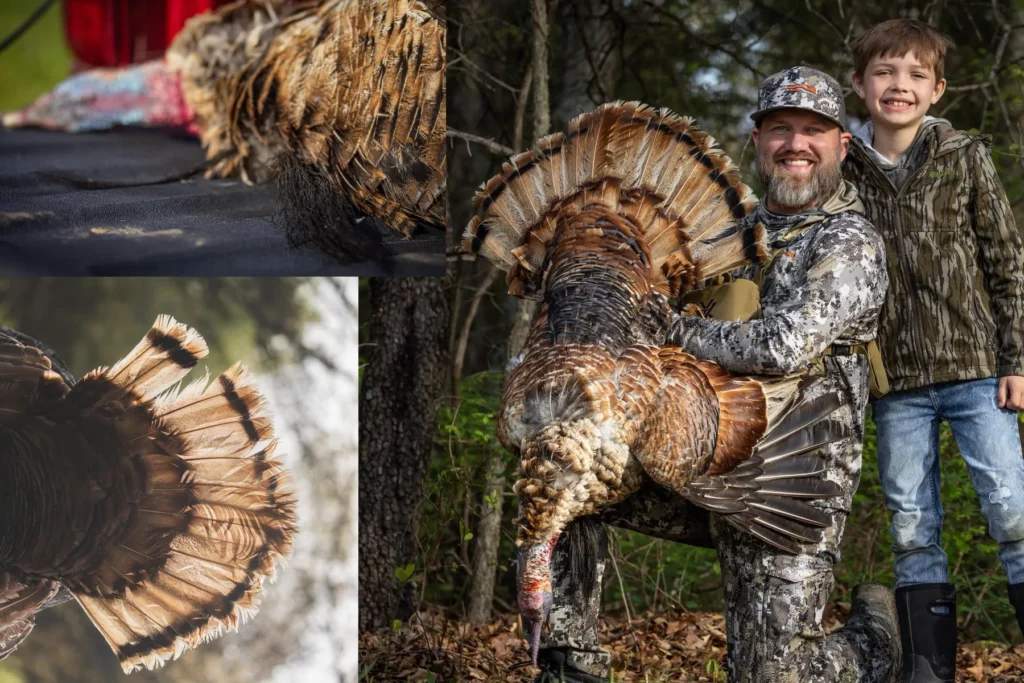
Dusty Altman used to be a hunting guide, and he’s done a lot of turkey hunting. But few memories rival that of the chase he experienced on one turkey hunt.
One of Altman’s sons is journeying to get his wild turkey Grand Slam. This spring, his son shot a Missouri turkey during the youth weekend. Then, he and his two sons went out and scouted before the regular season opener. They located some turkeys, and among them was a very rare erythristic (red phase) wild turkey.
“As soon as I saw that bird, I thought somebody’s domesticated turkey was out,” Altman said.
“I’ve seen some color-phase turkeys, most being the smoke phase,” Altman continued. “But I’ve never seen a wild bird this color. I did some research, and discovered it was erythristic, and that it was legal to shoot in Missouri.”
He started sending photos and videos to others, and they helped confirm the color phase. “My buddies got me pumped up,” Altman said. “You’re crazy if you don’t go hunt that bird.”
Of course, his primary goal was to help his son. That said, there was a timing issue.
“Here I am, on this journey to help him shoot turkeys,” Altman said. “The problem is, he already filled his tag in Missouri and wouldn’t be able to use his second tag until the second weekend.
So, they had a conversation. They decided that, if they didn’t get this turkey the opening weekend, there was a good chance a neighbor would shoot this bird.
So, while scouting the afternoon before the hunt, they watched the turkey as it strutted for 2 ½ hours. They roosted the bird that evening, and it was a little way off from the hens.
The next morning, on April 15, 2024, they set up between the gobbler and hens. Their location was about 100 yards from his roost site. Hens were about 200 yards the other direction. Altman hoped his Avian-X LookOut Hen decoy would do the trick.
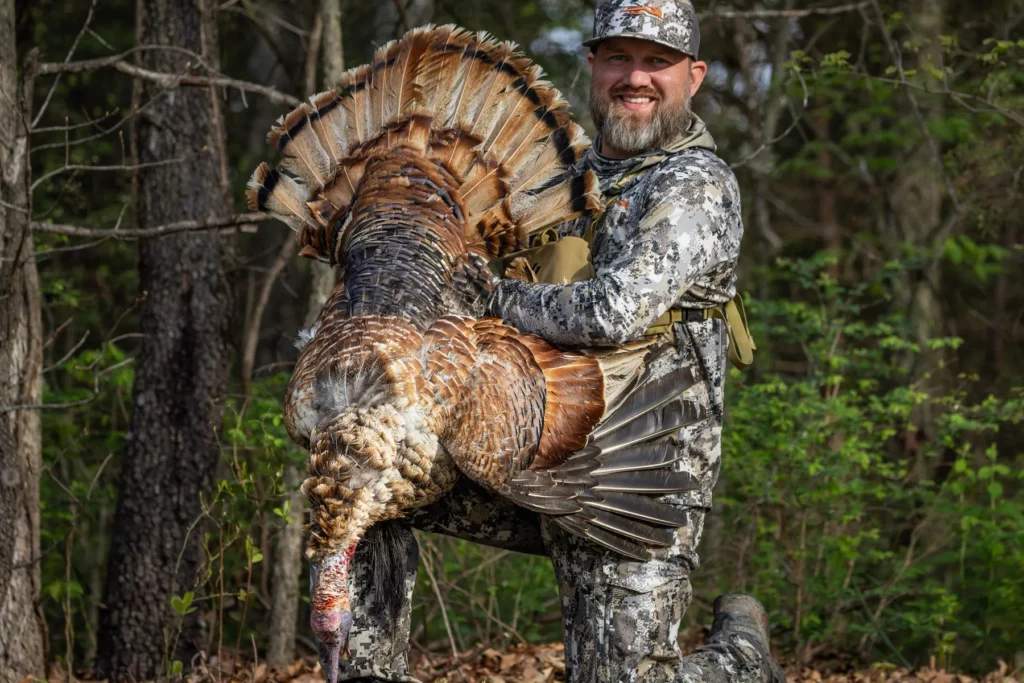
As light appeared on the horizon, turkeys started talking in the trees. A few tree yelps, and Altman had the red bird screaming. Within minutes, it dropped down and strutted right into the decoy spread.
Altman shouldered his Remington 870 and watched the big red fellow waddle into shotgun range. A click of the safety, and pull of the trigger, and the turkey folded.
The gobbler weighed in the low 20s, had two beards, and sported 1 ¼-inch spurs. Without question, it was a 3-year-old bird.
Incredibly, he got out of turkey hunting for about 10 years, which was the spring before his son was born. His kids changed that, though.
“My boys have brought me back into the turkey hunting world,” he said.
Time with his family is the big prize. But a rare erythristic turkey doesn’t hurt, either.
Before You Bolt...
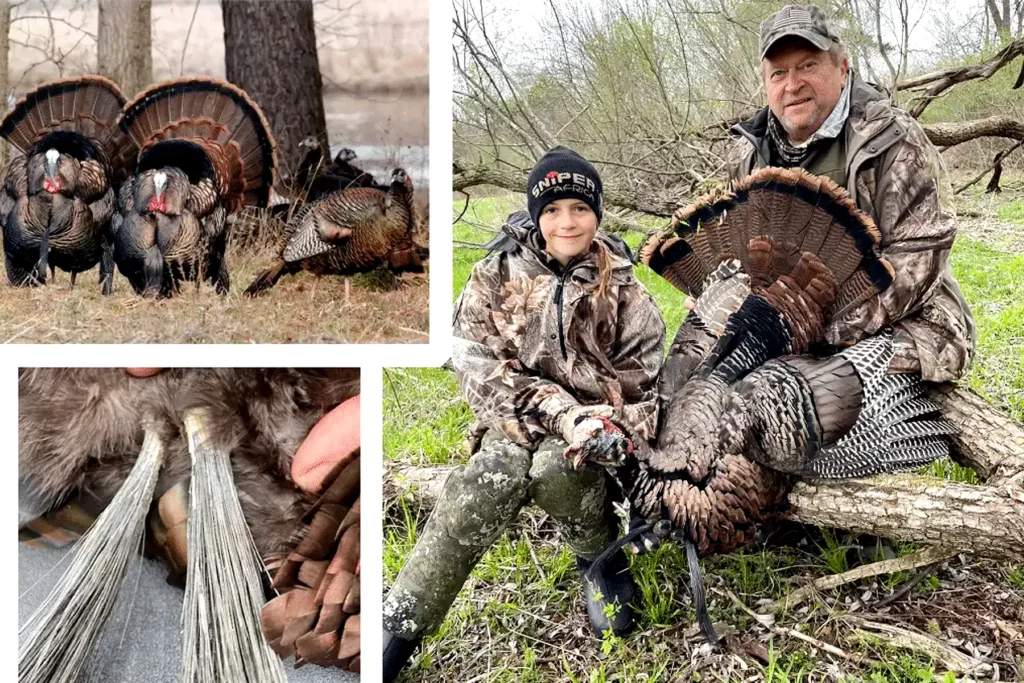
Want to see more wild game oddities? Check out this Double-Beard Tale straight outta Michigan.
And for some truly wild deer and turkey mounts, click here!
